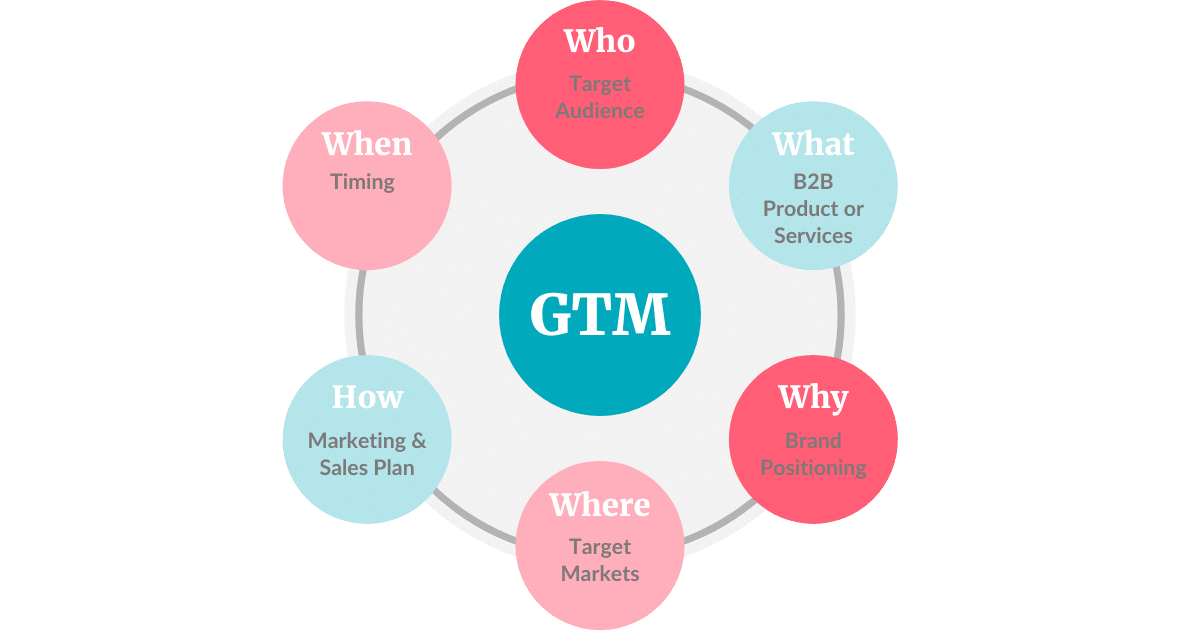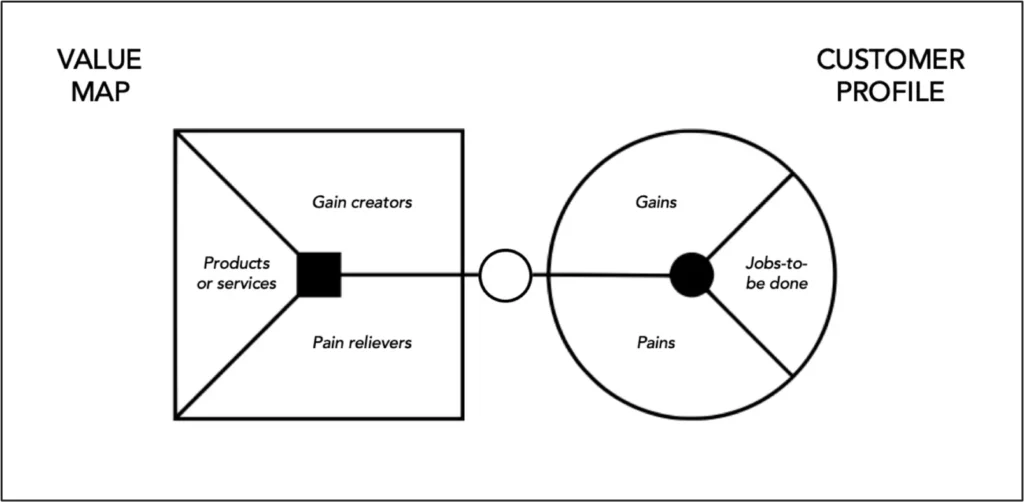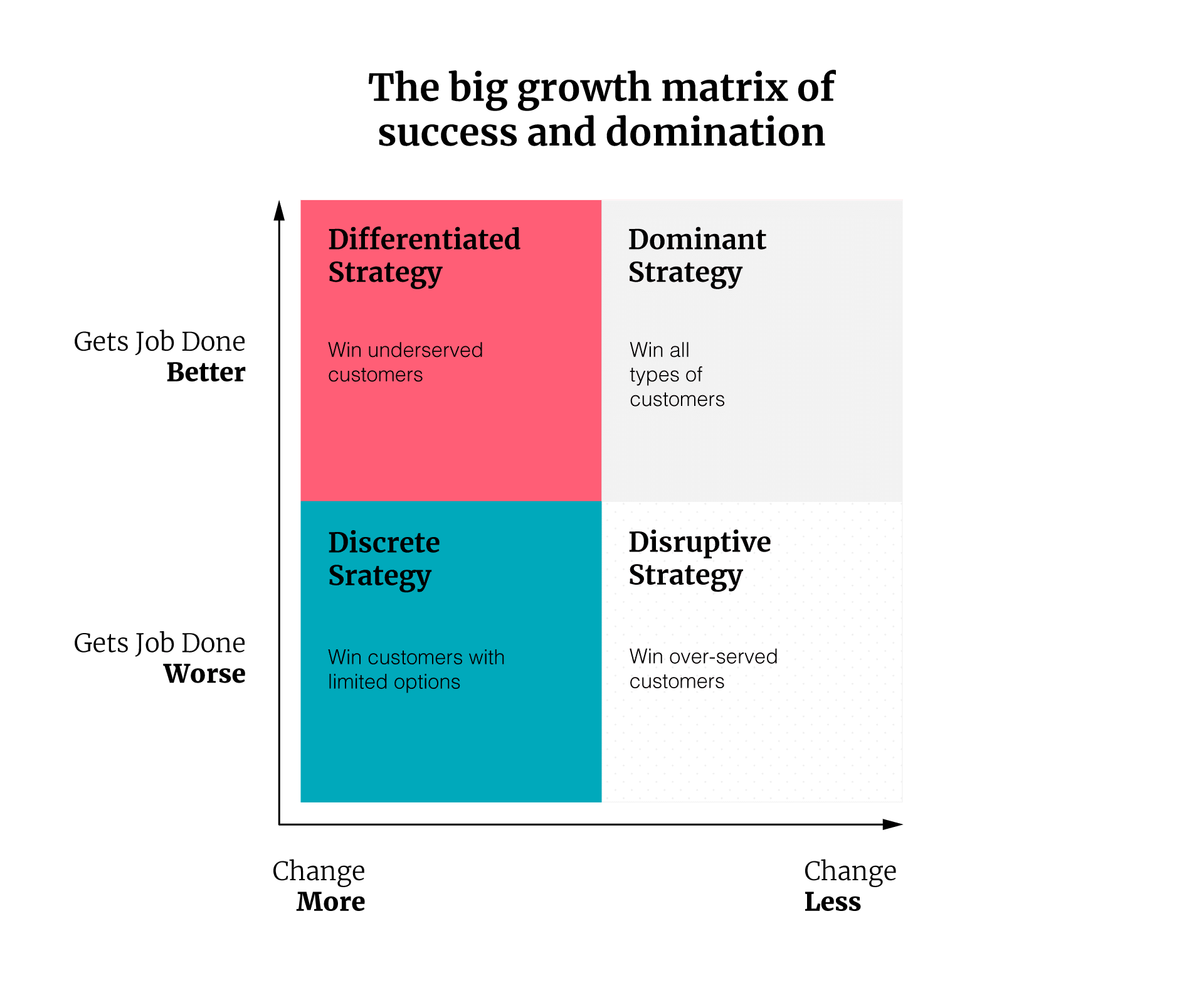A Go-to-Market Strategy Guide for B2B SaaS Companies
Share this article

Up to 45% of product launches are delayed for several reasons — this can include a failure to meet customer requirements and lack of formal launch processes, such as a SaaS go-to-market strategy (GTM). These are some of the critical issues that product managers experience internally that result in poor customer reception.
As a revenue leader, you need to have a clearly defined GTM strategy that delivers your unique value proposition to customers. Your GTM is all about getting your audience to see what you see in your product. It’s a plan that details how an organisation can engage with customers to drive sales and gain a competitive advantage.
Essentially, you’re aligning your marketing, sales, and product goals under one umbrella. Within a B2B context, this is a crucial step as you’re trying to sell your product to people who, for the most part, already know what they’re looking for or what the competition looks like. A well defined b2b digital marketing strategy is key to achieving this alignment effectively.
So, if you want to operate in the B2B SaaS market successfully, you need to consider the sales process within the context of product and marketing — not as an afterthought! Having a tailored and detailed GMT strategy enables you to do that. Keep on reading to learn more!
Recommended reading: For further information on how to set up your GTM and wider business processes, check out our free eBook — The Big Book of SaaS for Founders
Do you really need a GTM?
Even the best product can fail. A study by the Harvard Business School showed that up to 95% of new products launched every year fail. As such, it’s increasingly important to have a refined GTM strategy before launching any new product. A GTM strategy allows you to:
- Avoid mistakes and oversights: A GTM strategy provides you a defined direction to avoid errors, increasing the chances of a successful launch.
- Identify the right product-market fit: Even if you have an innovative and well-designed product, it needs to fit your target market. The strategy allows you to avoid oversaturated markets, which can dampen your launch.
- Manage expectations: Even if the market is receptive to your product, you can’t expect great sales immediately after launch. Your GTM strategy allows you to have reasonable expectations.

Basically, without a SaaS go-to-market strategy, you risk low conversion rates and high churn, all the while understanding very little about your customer. Precisely, without a GTM:
- You can fail to connect with the right audience: The strategy lets you know whether the solutions suit the target market. It also helps you identify your customers’ frustrations and pain points and how to address them.
- You can create an unsustainable customer acquisition strategy: Traditionally, new product launches are associated with aggressive advertising budgets and abnormal discounting strategies, which cost startups. An effective GTM strategy can help to minimise the entire cost of launching a new product.
- You can create unscalable processes that will hamstring your business: As a startup, scalability is essential for successful outcomes and growth. Without a solid strategy, you’ll keep on spinning the wheels and not make any progress.
As such, it’s vital to avoid the typical resource wastage associated with new product launches. Take ample time to do the leg work beforehand and build a GTM to map out your sales, marketing, and product functions — how they work individually and what they hope to accomplish individually, but also how they intertwine and how their goals intertwine.
How to build the blueprint for your GTM
Following a structured path is key to successful product launches. It allows you to identify the right time to scale or scrape an idea before it costs your business. Therefore, knowing how to build a GTM strategy is a vital skill for any product manager. Here are essential steps you need to follow:
1. Pinpoint growth strategy
You need to write a comprehensive strategic plan that considers your goals, tactics, strategies, and competitors. The write-up should also factor in your vision, mission, and value statements as well as budget, operating, and action plans.
This is the ideal time to outline everything about your company and product. If you have a more sales-sensitive product, you need to define the objectives of your support team and the tools they’ll need to achieve those objectives.
2. Determine your value proposition
It’s vital to understand your product in its entirety — its features, benefits, and value. You have better chances of winning customers if you can clearly show the benefits of your product. Also, it’s vital to know who your audience is, why they want your product, and how this helps your business.
Using a value proposition canvas provides an easy way of understanding all these. It helps you to identify the right product features and functionalities that your customers want. Hence, it becomes effortless to improve your conversion rate.

3. Study your competition
Whatever product you want to launch, there are likely several alternatives in the market already. As such, it’s advisable to study both direct and indirect competitors to gain a competitive edge. This will also help you understand your brand position, making it easy to create a differentiating factor.
Using a perceptual map helps you understand the strengths and weaknesses of your competitor’s products and market position in relation to your offerings. This type of competitive analysis allows you to compare your products’ pricing, product quality, and B2B Saas content marketing strategies to that of the competition.

4. Develop a niche
Refined and targeted marketing is more effective in generating sales than targeting a general market. Basically, you have to identify the specific problems and challenges you want your product to solve. Carving out a niche market allows you to position yourself as the go-to company for the products you offer.
You want to focus on a niche that you can master. It must have a viable number of customers and growth potential. That way, it will be easier to develop a customised strategy that yields your desired results.
5. View your offering as a methodology, not a product
Traditionally, the sales process involves just pushing a product — it’s always about numbers. This approach impacts your customer’s lifetime value (CLV). Instead, you need to focus on selling a methodology, also known as solution selling.
B2B players are embracing solution selling because it addresses the specific needs and wants of customers. This methodology allows you to recommend problem-solving products or services after considering your prospect’s needs, problems, and concerns. In the long-term, selling a methodology improves your customer retention rates.
6. Develop different GTM strategies
There are different ways to tackle your GTM strategy that are all equally valid. Your ideal strategy depends on your unique requirements, but it’s good practice to develop all four to see which GTM works best for your business goals. Here are the four strategies you should know —
- Differentiated strategy: In this strategy, you can focus on providing something unique or distinct to customers. This allows you to boost your competitive advantage, giving you the freedom to price your product competitively. A good example, in this case, is HubSpot, a complete CRM platform that provides access to different tools, such as marketing, sales, and CMS tools.
- Dominant strategy: If you want to win different customer types, this is the strategy you should adopt. Companies, such as AWS, Xero, Salesforce, and Zendesk, are using this strategy. In this case, your product must prove helpful to players in different industries.
- Discrete strategy: Traditionally, there are not many brands using this strategy because it’s somewhat hard to understand. But its competition is lower, making it a great strategy to try. It’s an ideal strategy if you want to target “restricted” customers or those with limited options.
- Disruptive strategy: This strategy is ideal for targeting an overserved market. It allows you to provide a cost-effective solution to customers looking for cheap alternatives. Canva and Freshdesk use this strategy — they both disrupted their respective sectors, even though there were other premium and great alternatives.
7. Consider pricing models within each strategy
It’s also vital to look at your pricing for market penetration — the pricing model you use and your charge for the product, matters. Traditionally, new entrants usually offer lower prices than competitors to attract customers. Whilst this strategy works, you don’t need to take a heavy loss of sales to win customers.
Depending on your product, there are different models you can use, including per-user, per-storage, per-feature, tiered, and freemium. Take the time to review each model and how it fits into your strategy. Understand your operational costs, product value, target audience, and price options when pricing your product.

Suggested reading: For more information on how to formulate your pricing strategy, take a look at our blog — 5 Ways to Build a Differentiated B2B SaaS Sales Strategy
8. Identify your success metrics and set business-level KPIs
You need to pick the right metrics and key performance indicators (KPIs) for your business goals. Basically, KPIs help you measure how effectively you’re achieving your objectives. Using the SMART criteria makes everything easy — it allows you to identify specific objectives, measure progress, set attainable goals, and assess the time-frame of attaining the goals.
It’s vital to pay attention to both high-level and low-level KPIs to ensure a stellar performance. High-level KPIs focus on the overall performance of your business, while low-level metrics concentrate on your internal processes and departments, such as HR, sales, marketing, support, among others. Remember to set short-term and long-term KPIs, ensure they’re actionable, and continuously review progress and readjust as needed.
9. Take your CRM selection process very seriously
Your customer relationship management (CRM) tool plays a crucial role in your SaaS go-to-market strategy. The tool should enable you to build, nurture, and manage the right relationships with customers from the beginning. It should allow you to stay connected with customers and streamline your record-keeping and communications.
As such, consider reviewing your current needs and situation to determine the ideal CRM tool for you — you need to review different products to compare features and pricing. Today, most startups prefer cloud-based CRM tools, such as SalesForce, HubSpot, and Pipedrive, since most processes are built on digital micro-interactions.
Struggling to build a marketing campaign that engages prospects?
Download this FREE guide to learn the best and most effective tactics to growing web traffic, leads, and closing more business than ever before!
Key things to avoid
Your GTM is crucial to a successful business — so you need to get it right. Without a solid, well-differentiated strategy, you’re likely to fail. Here are some things to try to avoid at all costs:
- Ignoring the customer: The customer should take centre stage in your strategy — they should be the heart of everything. At the end of the day, your product is meant for them, not you! So be sure to understand their needs and desires.
- Excluding the consumer role in your GTM: Be sure to understand how customers use your product and the jobs they need to complete. This way, it will be easier to know how it improves their processes or transforms their operations.
- Not considering your route to market: You should have a route for reaching your potential customers — What targeting techniques do you plan to use? What channels are ideal for getting to your customers? Detailed research will help define how to target and approach customers.
- Not sanity-checking product ideas: Be sure to validate ideas before developing them — your product should have an audience, purpose, and benefits. You shouldn’t waste your resources and time to bring the wrong product to the market.
Specialist support can help
Ultimately, there is no golden ticket to a successful SaaS go-to-market strategy — it has to be contextualised and tailored to your exact business requirements. Following the steps outlined above is a great place to start, and certainly will help you get the ball rolling. Plus, you’ll need the right team to develop and implement the strategy.
Still, you can consider looking to agencies for help with this. At Gripped, we have tried and tested experience in helping startups with their strategies. We can help you develop the marketing element of your GTM in line with the requirements devised for your business. You’ll get a specific solution tailored to your exact needs and requirements.
Be sure to get in touch with us today, and we’ll be glad to work with you!
SaaS Go-to-Market Strategy FAQs
Your go-to-market (GTM) strategy is how you market your product/service to customers. It includes everything from who you target and what channels you use to reach them. The GTM strategy should be based on customer needs and business goals. A successful company has a well-thought-out GTM strategy, so it is important to work closely with sales and marketing when developing one.
SaaS Go-To-Market Strategy includes three elements:
1) Product, Positioning and Propositions
2) Marketing and Messaging
3) Sales & Distribution
Each element has different objectives and strategies for each stage/function. The primary objective of the product is to create market demand for the new offering. Marketing is responsible for communicating about the product, positioning the offering, and driving awareness. Sales and distribution ensure that product gets into customers' hands.
A great way to start writing a SaaS GTM plan is to ask yourself what kind of business you want to run. Then, you should decide how to acquire customers and generate leads for your business, such as through SEO, Google Ads, Facebook Ads, Twitter ads, etc. Next, you should identify your target customer segment and create a conversion funnel from lead to purchase. Finally, you must define your goals and KPIs for your marketing efforts.
A SaaS GTM plan includes all the information about the goals, targets, and metrics for managing the project. It helps the team understand what needs to be done, how much effort should be spent on each task, and when they need to complete them. The main purpose behind a GTM plan is to help you monitor and control the project's progress.
A GTM playbook is a document where you plan what activities to do when launching a new product or service. The first step is determining which phases you must go through, such as pre-launch, launch, post-launch, etc. Then you will write down all the activities you need to perform for each phase. Finally, create milestones along the way.
A go-to-market KPIs includes everything from sales pipeline management to customer retention rate. The goal is to track your performance against your company goals. These metrics include the number of leads generated per week/month, conversion rates, average revenue per lead, etc.
Reach Your Revenue Goals. Grow MRR with Gripped.
Discover how Gripped can help drive more trial sign-ups, secure quality demos with decision makers and maximise your marketing budget.
Here's what you'll get:
- Helpful advice and guidance
- No sales pitches or nonsense
- No obligations or commitments



Book your free digital marketing review
Other Articles you maybe interested in
B2B Demand Generation: Should You Adopt This Strategy in 2025?
Discover the essential tactics and strategies for B2B demand generation in this comprehensive guide.
A Guide to the Top 10 Marketing Agencies for B2B SaaS Companies: A Comprehensive Comparison Guide
The B2B SaaS landscape is booming—and it’s never been more challenging to break through the noise. Between new entrants, accelerating product cycles, and sky-high expectations from digitally savvy buyers, marketing your SaaS offering effectively requires a nuanced, tech-first approach. That’s where specialised marketing agencies for B2B SaaS companies come in. Unlike generalist agencies, these specialised…
The 10 Best Full Service Digital Marketing Agencies Updated for 2025 (UK List)
Navigating the digital marketing landscape has never been more complex—especially if you’re a B2B tech or SaaS company aiming to stand out in an increasingly crowded space. Between SEO, content marketing, paid campaigns, CRO, marketing automation, and social media engagement, the sheer volume of channels can be overwhelming. That’s where a full-service digital marketing agency…


